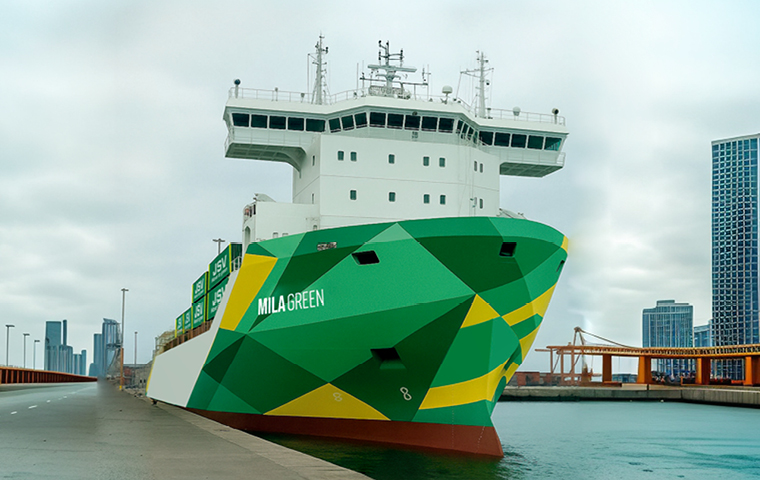Documentary requirements for maritime export and import: practical guide 2025

The documentation in maritime transport is the “operating system” of any international operation.
Each document —or its digital version— enables a step: certifying origin, defining the terms of sale (Incoterms), formalizing the transport contract, settling customs duties, and releasing cargo at destination. If one fails, delays, extra costs, and risks appear.
This guide brings together the essential documents for exporting and importing by sea, the differences between B/L and Sea Waybill, key customs declarations, and an operational checklist to minimize errors.
- Export: Commercial invoice, Packing list, B/L or Sea Waybill, Certificate of origin, SAD (Single Administrative Document), and sector-specific certificates.
- Import: B/L or Sea Waybill, Invoice + Packing list, SAD, licenses/certificates, and proof of origin for preferential tariffs.
Keys: consistency among documents, clearly defined Incoterm, digitalization, and pre-shipment verification.
Basic documentation for maritime export
For maritime exports, the exporter and their freight forwarder must prepare a coherent set of documents without discrepancies.
The main pillars are:
- Commercial Invoice: identifies seller and buyer, describes the goods, values, currency, Incoterm, and payment terms. It is the fiscal basis for duties and tax settlement.
- Packing List: details the physical contents (number of packages, weight, dimensions, marks, and numbering). It facilitates control at warehouse, port, and customs.
- Bill of Lading (B/L): the transport contract between the shipper and the carrier, and proof of ownership. It may be issued as an Original (negotiable) or Telex Release (electronic release of the original).
- Certificate of Origin: certifies the manufacturing country; essential to qualify for preferential tariffs under trade agreements. Usually issued by the Chamber of Commerce.
- Export SAD (Single Administrative Document): proves the customs export clearance. Processed by the customs agent with shipment information.
- Sector-specific certificates (depending on the product): sanitary, phytosanitary, veterinary, conformity (CE), MSDS for hazardous goods, etc.
- Financial documents (if applicable): Letter of Credit (L/C), documentary collections, bank guarantees.
Required documentation for maritime import
At destination, the importer (or their agent) must provide and verify the following:
- B/L (original or telex release) or Sea Waybill: authorizes delivery at the terminal and proves ownership.
- Commercial invoice + Packing list: used for customs valuation, tariff classification, and physical inspection.
- Import SAD: customs declaration for entry into the customs territory, including duty and tax settlement.
- Licenses and certificates (if required): sanitary/phytosanitary, technical approvals, prior authorizations.
- Proofs of origin (for preferential tariffs): EUR.1, Form A, or exporter’s declaration of origin.
80% of port delays can be avoided before shipment: full consistency between the invoice, packing list, and B/L.
B/L vs Sea Waybill: which one to use and when?
The Bill of Lading (B/L) and the Sea Waybill are maritime transport documents with different functions.
Choosing correctly helps avoid delivery delays or idle time caused by coordination issues with original documents.
| Aspect | Bill of Lading (B/L) | Sea Waybill |
|---|---|---|
| Nature | Transport contract + title of ownership (negotiable) | Transport contract non-negotiable (no title) |
| Delivery | Requires originals or telex release | Delivered to the named consignee without originals |
| Typical use | Transactions involving financing or sale in transit | Trusted relationships and regular shipping flows |
| Risks | Delays if originals don’t arrive on time | Less control over transferability of ownership |
| Speed | Potentially slower due to handling of originals | Faster at destination |
Customs declarations and port presentation
For smooth clearance, document consistency is critical: the invoice, packing list, B/L, and certificates must all “tell the same story.”
Additional summary declarations and controls also take place in the port process:
- Summary Declaration of Cargo (export): pre-manifest providing details of goods being shipped.
- Summary Declaration of Discharge (import): advance notice allowing customs to know what is arriving and plan inspections.
- Inspections (documentary, physical, scanner): may be triggered by risk analysis, tariff codes, or sanitary alerts.
Quick reference table by type of cargo
| Type of cargo | Additional documentation | Critical points |
|---|---|---|
| Perishable | Sanitary/phytosanitary certificates, temperature control | Cold chain, transit times, border inspections |
| Hazardous (IMO) | IMO declaration, MSDS, proper labeling and stowage | Correct classification, approved packaging, segregation on board |
| Industrial (machinery) | Technical conformity (CE), manuals, serial numbers | Accurate tariff classification, valuation including accessories |
| Textile/footwear | Proof of origin, labeling | Specific rules of origin, unit values |
Best practices for document management
- Cross-checking: same number of packages, weights, and descriptions across invoice, packing list, and B/L.
- Clear Incoterms: define who bears the costs/documents (e.g., CIF vs DAP changes responsibilities at destination).
- Digitalization: cloud repositories, version control, and expiration alerts (licenses, L/C).
- Traceability: record changes and issue corrections (amendments) before shipment.
- Continuous training: customs regulations and trade agreements evolve; keeping the team updated reduces incidents.
Operational checklist by phase
| Phase | Actions and documents | Objective |
|---|---|---|
| Pre-booking | Define Incoterm, confirm tariff classification, licenses, sanitary requirements | Legal and fiscal feasibility |
| Booking and stowage | Booking with shipping line, VGM (verified gross mass), B/L instructions | Guaranteed slot and accurate data |
| Export clearance | SAD, invoice + packing list, certificates of origin and sector-specific | Unblocked departure |
| Transit | B/L issued (original/telex) or Sea Waybill, milestone control | Documentation available at destination |
| Import clearance | Import SAD, licenses, duty/VAT settlement, release | Efficient cargo pickup at terminal |
An error at the origin can cost you tariff preference: validate the certificate of origin and tariff codes before exporting.
Common mistakes that increase operational costs
- Inconsistencies between invoice and packing list (packages, weights, descriptions).
- B/L with incorrect consignee or without telex release instructions when fast delivery is needed.
- Incorrectly validated rules of origin: losing tariff preference due to a formal detail.
- Expired or misapplied licenses/certificates not corresponding to the correct batch.
- Poorly chosen Incoterm that shifts unexpected costs/risks to the importer or exporter.
When is it advisable to rely on a customs agent?
When handling regulated products (food, chemical, healthcare), transactions with documentary financing (L/C), or multiple origins, working with a customs agent reduces risks: they validate tariff codes, manage SADs, coordinate inspections, and ensure traceability of the proof of origin.
Useful resources and further reading
- Access2Markets (European Commission): country-specific requirements, tariffs, and rules of origin.
- World Trade Organization (WTO): regulatory framework and trade agreements.
Need help with your next shipment?
If you want to outsource the complex parts and gain efficiency, rely on an operator that integrates maritime transport, documentation, and customs end to end. Visit here:
Executive summary
Export essentials: Commercial invoice, Packing list, B/L (or Sea Waybill), Certificate of origin, SAD, and sector-specific certificates.
Import essentials: B/L or Sea Waybill, Invoice + Packing list, SAD, licenses/certificates, and proof of origin for preferential tariffs. Keys: consistency between documents, clearly defined Incoterm, digitalization, and pre-shipment verification.
Comparative table of documentary responsibilities by Incoterm (summary)
| Incoterm | Who manages export documents | Who manages import documents | Remarks |
|---|---|---|---|
| EXW | Buyer (usually through their agent) | Buyer | Heavier documentary load for the importer |
| FCA / FOB | Seller (export clearance documents) | Buyer | Commonly used in maritime transport (FOB for conventional cargo) |
| CIF / CFR | Seller | Buyer | Seller arranges freight; importer handles customs clearance |
| DAP / DDP | Seller | Seller (DDP) / Buyer (DAP) | Under DDP, the seller assumes nearly all documentary responsibilities |
Related news

JSV Group acquires its second next-generation, low-emission vessel
JSV Group acquires its second next-generation, low-emission vessel

Multimodal Transport in Logistics Sustainability
This container offers every advantage: large capacity and excellent maneuverability.